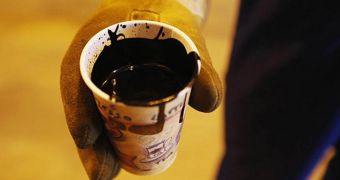It's good news for energy giant BP and its troubled consciousness. Thus, it appears that, about 4 years after the Deepwater Horizon disaster, when oil hit the fan, so to speak, the Gulf of Mexico is recovering from this environmental catastrophe.
Think Progress informs that, earlier this year, i.e. between March 30 and April 22, a group of researchers spent some time exploring the seafloor in this part of the world.
The area that they focused on is the one surrounding the well from which about 200 million gallons (750 million liters) of oil leaked into the Gulf of Mexico back in 2010, the same source details.
While carrying out this investigation, specialists with the University of Georgia, the Florida State University, and the University of North Carolina have found that Deepwater Horizon oil is becoming part of local ecosystems.
What they mean is that, according to their observations, sediment in the Gulf of Mexico has covered most of the oil and is now burying it even deeper in the seafloor. Apparently, this need be regarded as good news.
“The oil spill has become part of the the geological record. Since one cannot take a gigantic vacuum cleaner and clean up this stuff, getting buried is the best alternative,” researcher Andreas Teske with the University of North Carolina explains.
Although microbes present in the Gulf of Mexico have helped clean up some of BP's mess in the Gulf of Mexico by chewing down on some of the oil's compounds, it is believed that certain elements will remain hidden in the seafloor for thousands of years to come.
One other piece of good news is that, by the looks of it, wildlife in the Gulf of Mexico has taken a keen interest in recolonizing the area affected by the Deepwater Horizon disaster.
Specifically, the research team that visited the well site earlier this year claims to have found evidence that species such as crabs and shrimp are now setting up camp close to the BP well responsible for the 2010 environmental catastrophe.
Granted, it would have been better if they had not been forced to leave the region to begin with, but this discovery does make a suitable consolation prize. As Andreas Teske put it, “In a sense, this is an improvement.”
The specialists who took part in this research project stress that, although the Gulf of Mexico appears to be well on the road to recovery, there is still much that scientists need to learn about certain animal species that are likely still suffering because of the 2010 oil spill.

 14 DAY TRIAL //
14 DAY TRIAL //